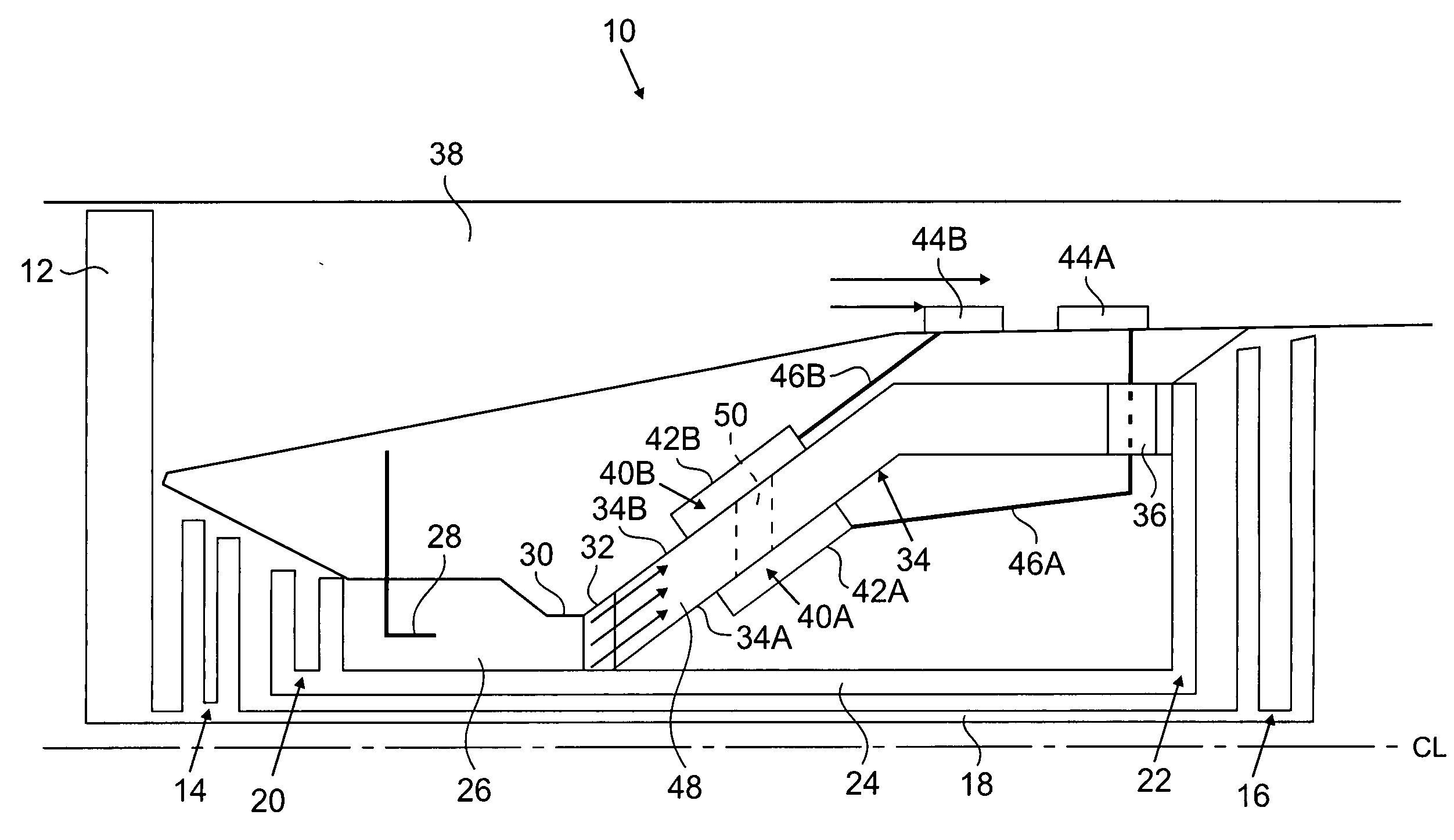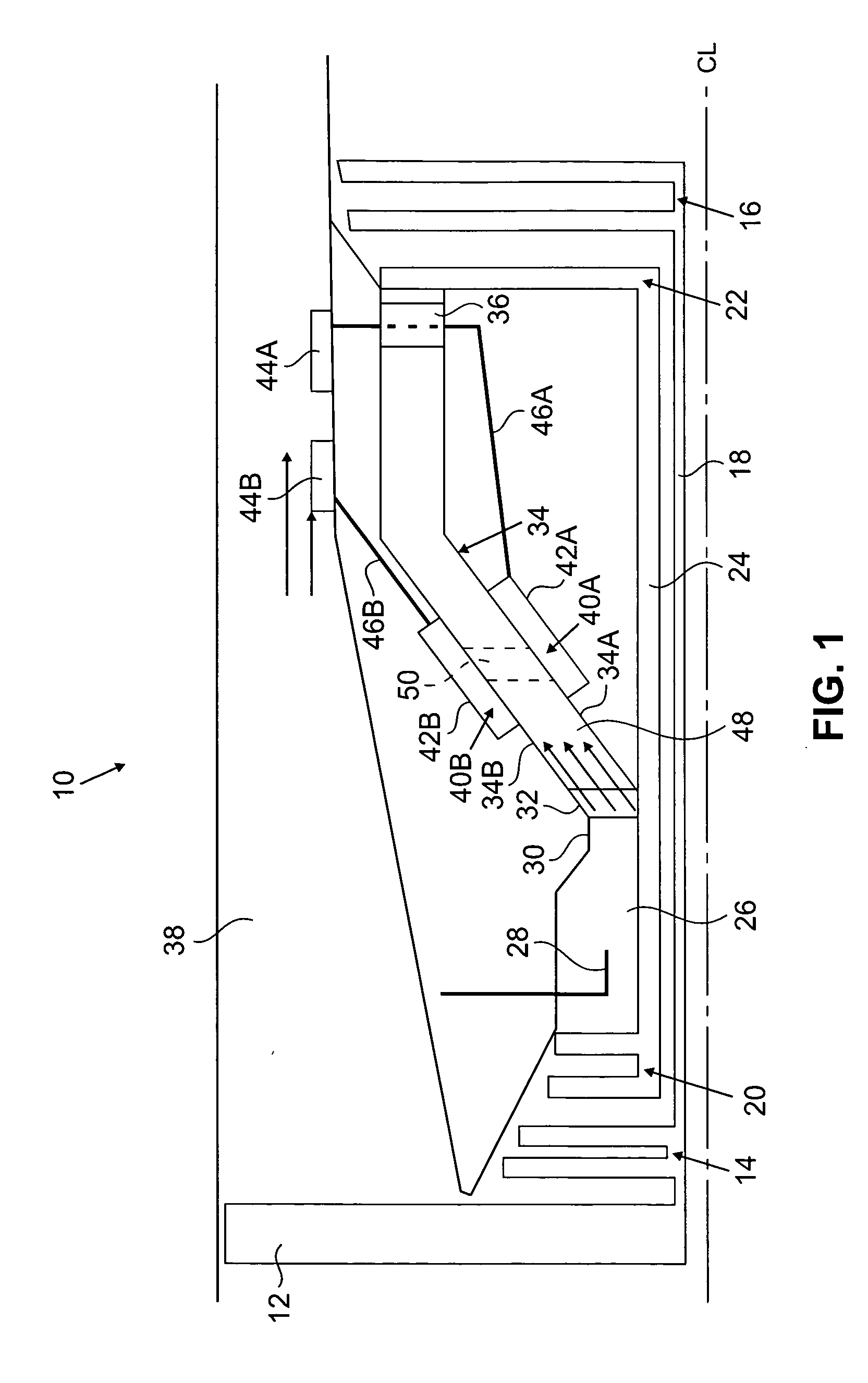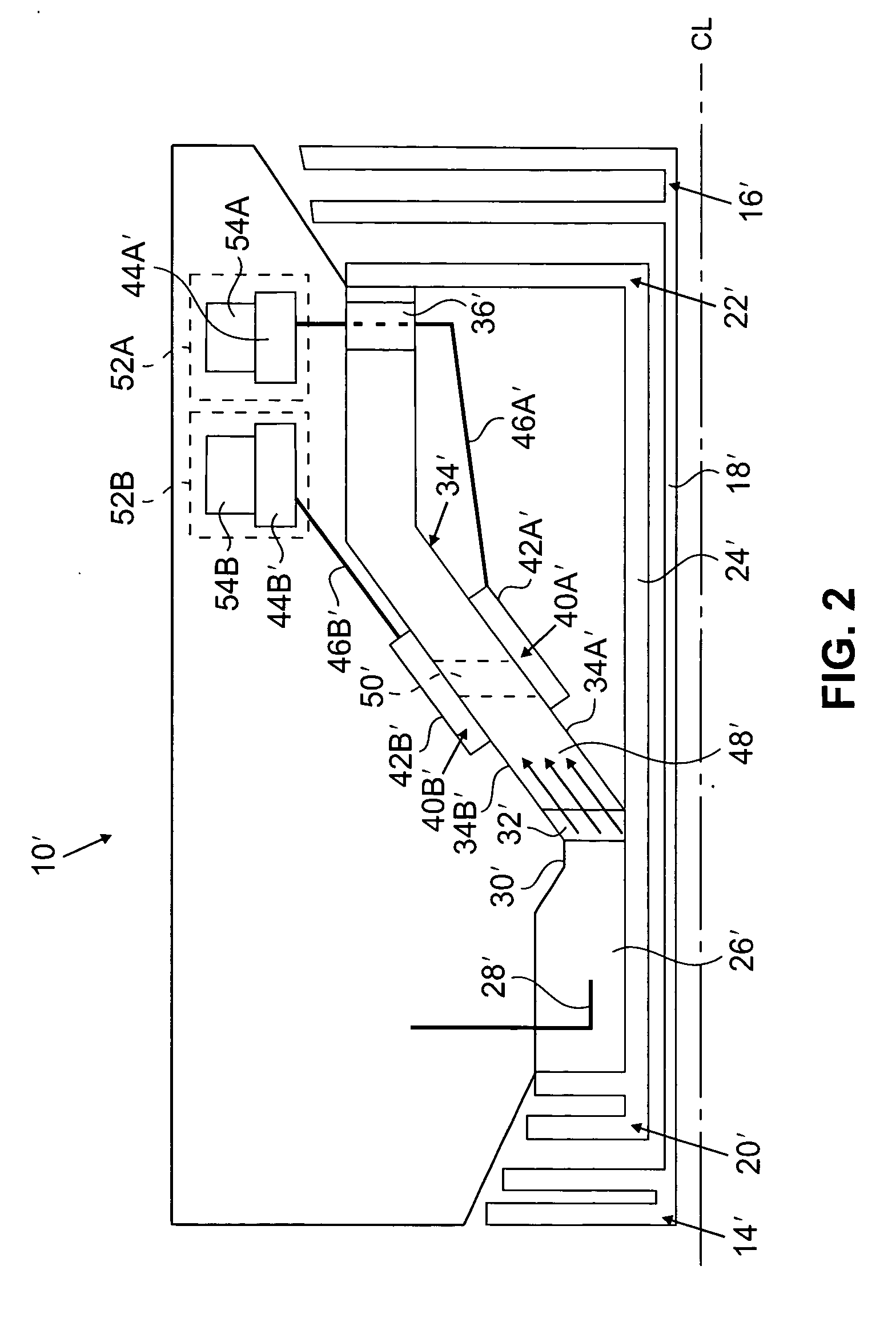Vapor cooling of detonation engines
a technology of detonation engine and vapor cooling system, which is applied in the direction of turbine/propulsion fuel heating, intermittent jet plants, vessel construction, etc., can solve the problems of sudden pressure spikes and turbulence, the number of difficulties in providing, and the tbc applied to superalloys may not provide sufficient thermal protection or be sufficiently durable,
- Summary
- Abstract
- Description
- Claims
- Application Information
AI Technical Summary
Problems solved by technology
Method used
Image
Examples
Embodiment Construction
[0007]In general, the present invention relates to detonation engines that utilize a vapor cooling assembly to cool containment walls adjacent to a portion of a gas flowpath where detonation waves are typically present during operation. The vapor cooling assembly includes a vaporization section located adjacent to the gas flow path where it is desired to remove thermal energy, and a condenser section located away from the gas flow path where it is desired to expel thermal energy. The vapor cooling assembly is configured to transport thermal energy from the vaporization section to the condenser section at a relatively high rate through cyclical evaporation and condensation of a working medium sealed within the vapor cooling assembly. The condenser section can alternatively expel thermal energy to a fan bypass stream, to fuel that acts as a heat sink, or to other fluids that permit thrust recovery of that thermal energy.
[0008]FIG. 1 is a schematic illustration of a hybrid turbofan det...
PUM
 Login to View More
Login to View More Abstract
Description
Claims
Application Information
 Login to View More
Login to View More - R&D
- Intellectual Property
- Life Sciences
- Materials
- Tech Scout
- Unparalleled Data Quality
- Higher Quality Content
- 60% Fewer Hallucinations
Browse by: Latest US Patents, China's latest patents, Technical Efficacy Thesaurus, Application Domain, Technology Topic, Popular Technical Reports.
© 2025 PatSnap. All rights reserved.Legal|Privacy policy|Modern Slavery Act Transparency Statement|Sitemap|About US| Contact US: help@patsnap.com



